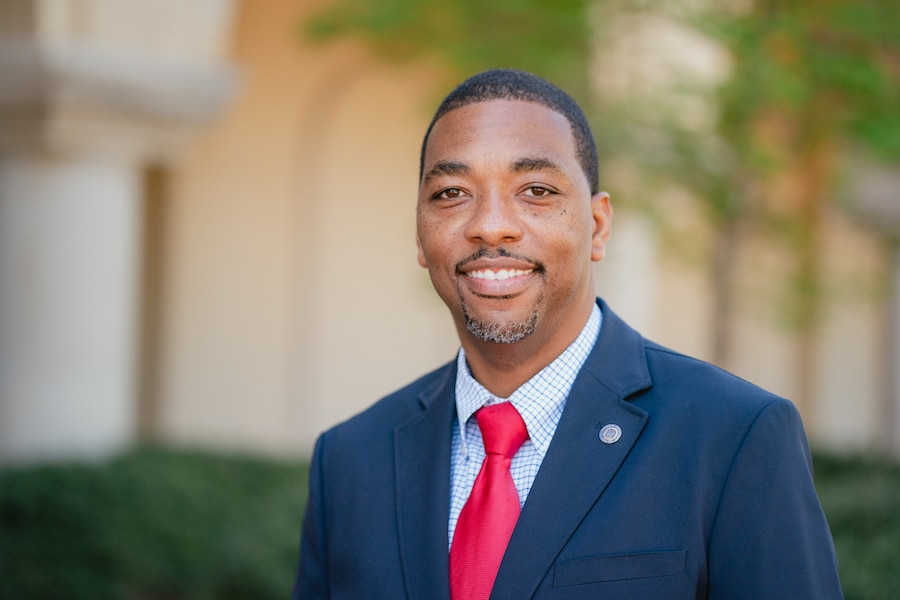“Three things are true about our cities. They are growing at an amazing rate; they are fragmenting as fast as they are growing; and they will touch every human being living today in increasingly profound ways,” wrote Randy White, urban projects director for InterVarsity Christian Fellowship, in his book “Journey to the Center of the City.”
Despite the inescapable grasp of urbanization, White said few churches are addressing the needs of urban centers. With cities now boasting dozens of ethnic groups, the cultural and economic divide between new suburban communities and urban communities are rife with myths and misconceptions. In short, urban ministry makes many believers uncomfortable.
Burdened with the spiritual and physical results of urban growth, White and his family moved from a stable California suburb to one of the poorest neighborhoods in the heart of Fresno, Calif. Chronicling their transition to urban life, “Journey to the Center of the City” shares the story of the White family as they sought to make a difference for Christ in their own city.
In reviewing his own urban ministry, White purposed his book to serve as “a testimony to God’s love and provision for those who venture out of their comfort zones to practice a lifestyle of love in neighborhoods of need.”
Myth 1: The city is ugly
Shortly after moving his family to a low-income, neglected community and finding himself far removed from his white, middle-class perspective, White said he was forced to face several myths of inner-city ministry. To reach new demographics with the gospel, believers must face the unpleasant realities of the city and move past them, he said.
“The most obvious myth to emerge from [my] experience was my unspoken assumption that this part of town was incapable of beauty. After all, didn’t the bars on windows, cyclone fences, deteriorating paint, lack of landscaping, and graffiti prove that the residents there didn’t care about taking care of things? The place was so ugly,” White said.
But it wasn’t until White began to spend time with his new neighbors that his perspective changed.
“The beauty that exists in the core of the city began to dawn like a hazy sun in my eyes. It was the life of those neighbors that silently taught me to examine with different eyes what I assumed,” he said.
“They have the same appreciation for life and beauty, the same human aspirations, fears and desires for their family that we all know to be universal.”
“As commuters race to get out this neighborhood, they will miss the visual cues that exist just out of view, testifying to the beauty that is resident here ? Because most of those cues are inside the home. To see them one would have to stop and spend time there.”
Because believers are “well tutored by culture” to associate external realities with beauty, White said the first step in urban ministry is to “to retrain our eyes not only to expect beauty in unlikely places ? That means I need to learn the discipline of anchoring my sense of visual appreciation in people rather than in aesthetics alone.”
Myth 2: God dwells in the mountains
There is a second myth that prevents believers from ministering to urban dwellers: dirty, dangerous cities are the last place you’d go to find the presence of God. For example, White noted that most devotional guides have wilderness images on their covers?like a waterfall or mountain?sending the message that “it’s the hills, not the streets, that are alive with the sound of music.”
Conceding there is biblical precedent for going to the wilderness to seek God, White added that the journey of believers to the “calm of cabin retreats” has turned into an evacuation from urban centers.
As a result, the church is missing out on valuable ministry opportunities in their own cities.
“Some have fled not in search of God, but out of fear over what they see happening in the city.
Unfortunately, all too often the church has joined the mass exodus, removing the very salt and light that is needed.”
Quoting Psalm 121:1-2, White noted it is not the countryside that holds the power to calm fears. “It is the presence of God we are after, not merely escape from what we fear. Psalms, so often the book of the Bible that best helps us process our fears, sets a consistently urban context for God’s work,” with 49 of the 150 psalms having an urban focus. “Most deal with Jerusalem, but some deal with other cities. Most are psalms that express God’s creative love for the city.”
White sees the city as central to God’s design for redemption. “Let’s keep going to the mountain. We’ll go there to commune with God, to be renewed and inspired. But let’s go to the city too. There we will observe God at work, carrying out his transforming agenda.”
Love your city
The Great Commission begins with learning to love the city, wrote White, offering two ideas for ministering to urbanities. First, make connections with people. Defining “connections” as “simple chances for paths to cross,” White said even things like buying ice cream at the same time translates into a shared experience. “Then the connections can develop into greater opportunities for involvement with one another.”
The initiative of the Holy Spirit is central to interacting with people, he added.
“For me, the key has been to pray that God will orchestrate and direct this kind of neighbor-love,” White said. “Our journey to the center of our city is ? merely an attempt to cross paths with those who are poor and those who care about the poor, allowing our lives to influence one another, providing new contexts where Jesus Christ can make something happen?something new and redemptive?both in their lives and in ours.”
Second, loving the city means learning to partner with the poor. But, White added, that partnership must be conducted in a manner “that recognizes and maintains their dignity.” White suggests gathering a coalition of people from the neighborhood and from other Christian agencies to paint houses, install alley lights, read to children, and pick up trash. Working side-by-side with people from the neighborhood opens doors to share the gospel, he said.
For more specific ideas on how believers and churches can learn to love their cities, White included a list of 21 practical tips on beginning an inner-city ministry. He offers ideas such as taking a drive through a poor section of town.
“See if you can keep track of a few things and compare them to your neighborhood (for example, the number of boarded up houses, ratio of check-cashing stores to banks, and note the condition of the streets, amount of graffiti, etc).
Other ideas on White’s list include:
?Asking an inner-city church to sponsor an urban tour for some of your church members to learn about the needs of that part of the city.
?Attend an inner-city church that is ethnically different from your own church. Stay after the service to meet people and eat lunch together.
?Sponsor a joint youth group service project like Habitat for Humanity to connect a suburban and inner-city church.
?Prayerwalk through a neglected neighborhood with residents of the area every week for one month.
For more urban ministry ideas or to read excerpts from “Journey to the Center of the City” (ISBN: 0-8308-1129-X), visit ivpress.com.














